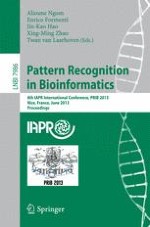2013 | Book
Pattern Recognition in Bioinformatics
8th IAPR International Conference, PRIB 2013, Nice, France, June 17-20, 2013. Proceedings
Editors: Alioune Ngom, Enrico Formenti, Jin-Kao Hao, Xing-Ming Zhao, Twan van Laarhoven
Publisher: Springer Berlin Heidelberg
Book Series : Lecture Notes in Computer Science
